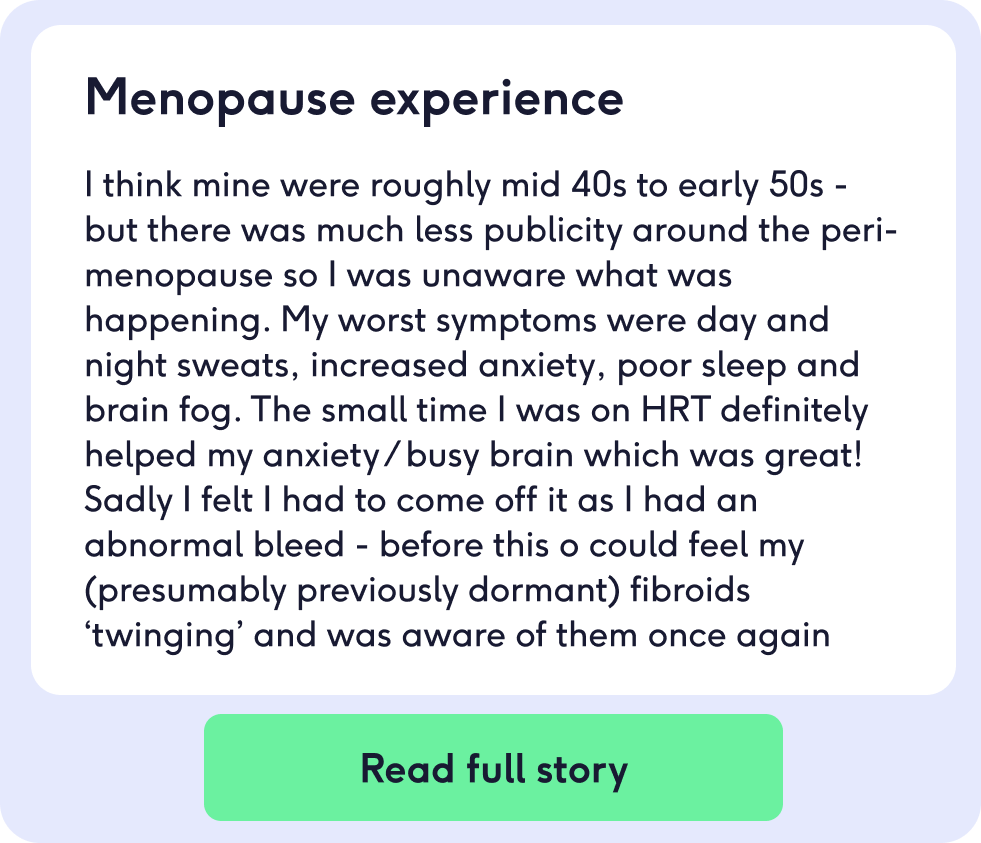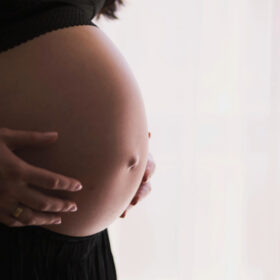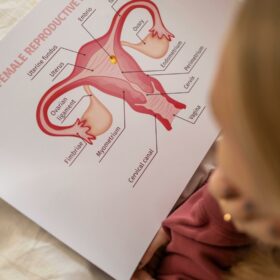
Fibroids after menopause
What's the lowdown?
Fibroids are growths from the muscular layers of the uterus that thrive off oestrogen
During menopause, oestrogen levels graduallly decline
Generally, fibroids do shrink during menopause and their symptoms slowly lessen in severity
What are fibroids?
Fibroids are a common gynaecological condition, experienced by 70% of women at some point in their life1. They are an oestrogen-dependant benign tumour that grows from the muscular layer of the uterus wall. That is fibroids in a nutshell! But there is so much more to them and we cover everything about fibroids here!
Hormones and menopause
During our lifetime, we experience a natural transition where your hormones decline and your periods get more infrequent until they completely halt. This occurs as our egg supply slowly diminishes and ovulation (release of an egg) becomes infrequent. At the same time, the ovaries gradually stop producing oestrogen and progesterone<sup2.
Fibroids after menopause
Do fibroids shrink after menopause?
As fibroids flourish in oestrogen rich environments, the decline in oestrogen during menopause is not favourable for them. So as a result, the size of the fibroids and therefore the symptoms they cause tend to slowly reduce. Your risk of developing a postmenopausal fibroid during this transition period is also lower3. However, this might not always be the case and some people still experience symptoms affecting their quality of life during their menopausal phase.
Do fibroids delay menopause?
Fibroids have no impact on menopause. Menopause is driven by the ovaries and fibroids are found in the uterus.
What are the symptoms of fibroids after menopause?
Symptoms of fibroids after menopause should lessen in severity as oestrogen levels have reduced, however, you can still experience:
- Heavy bleeding during perimenopause
- Pelvic pain and back pain
- Increased need to urinate
- Abdominal swelling/pressure
After reaching the menopause (12 months without a period), any form of bleeding is a cause of concern and can be a sign of overgrowth of the womb lining or womb cancer. If you notice spotting or bleeding a year after no periods, this needs to get checked by a doctor.
“If any woman comes into my clinic and describes bleeding from down below after the menopause, I will always investigate this urgently. This doesn’t matter if the bleeding is fresh, old, or even just a slight amount of pink or brown discharge – it’s the best thing to get it checked.” – Dr Fran Yarlett, The Lowdown Medical Director
Treatment for fibroids after menopause
During premenopausal years, fertility and plans for a family are a key consideration taken into account when deciding on the right fibroid treatment. Oral medication, contraception or minimally invasive procedures are usually recommended as the first options. Hysterectomy (surgical removal of the uterus as a whole) is reserved for severe symptoms, failed treatments or large fibroids. As fertility is no longer a concern during menopause, surgery might be more readily offered. However, treatment will be decided based on the size, location and symptoms severity of the fibroid, plus your medical history and fitness for surgical procedures. This does not mean medication and contraception (especially the hormonal coil) cannot be used during this time as well.
Fibroids and HRT
Fibroids, menopause and HRT is a tricky trio.
HRT stands for hormonal replacement therapy. During perimenopause and menopause, the decline in oestrogen and progesterone can afflict individuals with frustrating symptoms like hot flushes, mood swings and night sweats to name a few. Replacing these hormones in the body can alleviate the symptoms and restore your quality of life.
However, this is the tricky part. Although HRT can benefit menopausal symptoms, the re-introduction of oestrogen into the body might trigger the growth of fibroids. Occasionally, fibroid symptoms might even worsen as the fibroids grow in size4, similar to this user’s account:

It is important to disclose any history of fibroids to your doctor if you’re starting HRT as they might have to readjust oestrogen and progesterone doses to account for the fibroids. Often doctors will “start low and go slow” with your oestrogen dose to be able to carefully monitor any fibroid symptoms.
If you are worried about the impact of HRT on your fibroids, speak to one of our lovely women’s health GPs or menopause specialists. They have a wealth of experience and can offer you advice specific to your circumstances.
What’s next?
Perimenopause and menopause is a pivotal transitioning point in a woman’s life and we do not speak up enough about it’s true reality. Fibroids symptoms should ease with menopause, but in some cases can be complicated with HRT. You do not have to go through this period alone. Our perimenopause community has opened up about their perimenopause experiences so you can learn and feel less alone!
Our medical review process
This article has been medically reviewed for factual and up to date information by a Lowdown doctor.





